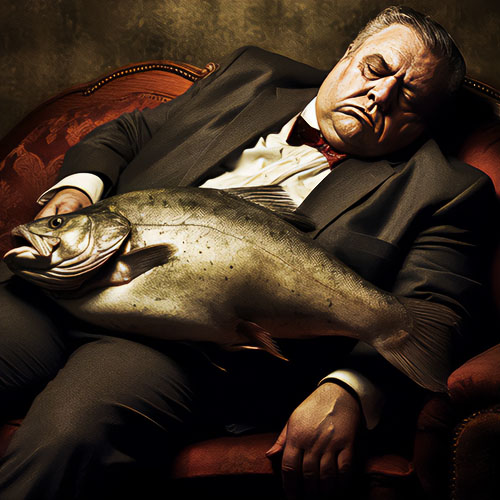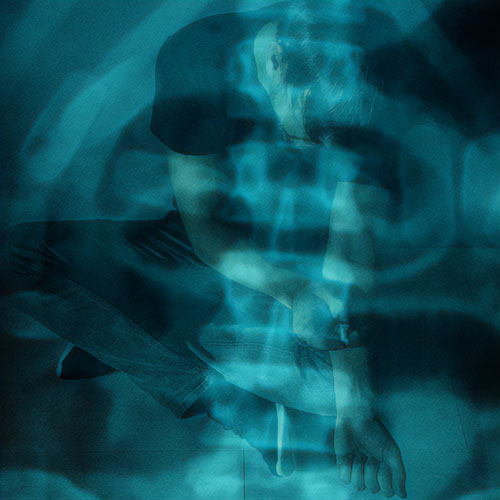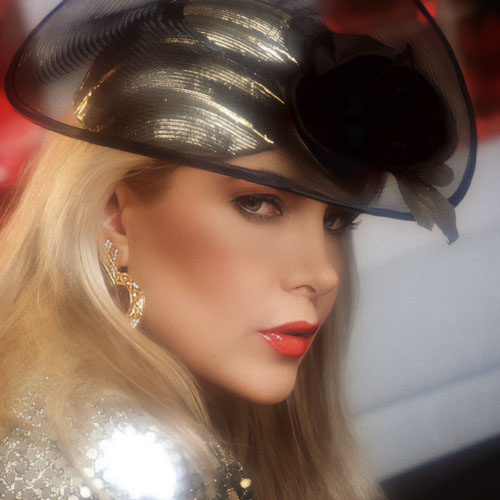If you’re talking about talent, if you’re talking about soul, then you’re talking about Harlem’s one and only Apollo.
Apollo
Two stories high. Fiery red snakes in the night. The brightest sign on Harlem’s mainline. Somehow it keeps on keepin’ on, just like the old theater itself. Out front there’re a couple of young bloods selling color glossies of Gladys Knight and the Pips. One dollar. No need to check out the marquee to know who the lines around the block are for.
The Apollo Theater pulls you in off 125th Street like some kind of religious revival. Past Harlem Embers flaming steaks and the smokin’ crowd by the box office, down the skintight mirrored lobby to where Frank Tilley in his blue uniform with the big Number One takes tickets the way he’s been doing since the place opened back in ‘34. He hasn’t been watching the shows lately, but can you blame him with the likes of those hand-tinted photos over his right shoulder? The Duke, Mr. B., Lady Day, Sam Cooke twistin’ the night away. Holy images in the Vatican of Rhythm and Blues. Eartha Kitt in leopard skin, Bobby Bland’s catfish smile, Little Willie John, Little Stevie Wonder. All of them “Negroes” then, with processes and wigs and short short hair. Not that long ago, but a couple of light-years away from the young black brothers and sisters waiting over there to satisfy a popcorn jones. A hum of activity pulls you through the doorway up ahead and then you’re inside the theater.
The Apollo Theater. The last of America’s legendary music halls. The Palace is just another Broadway theater now. The Paramount’s an office building. Just last year the Rolls-Royce red-necks of the Grand Ole Opry fled to Nashville’s suburbs, leaving Ryman Auditorium a historic but empty shell. Once upon a time right here on 125th Street they used to have shows at the West End, vaudeville at Keith’s Alhambra, variety bills at the Harlem Opera House, musicals at Loew’s Seventh Avenue, and burlesque at Hurtig and Seaman’s. When Mayor La Guardia, the Little Flower, banned burlesque, Hurtig and Seaman’s became the Apollo, the top showplace for black entertainers. Forty years later it’s the soul survivor.
For all the suede, satin, denim, Dynel, sassy shoes, and sheer style in the audience, and despite a few tries at dressing up the theater, the Apollo still has the feel of a burlesque house. Not much bigger than a cigar box, with a low overhanging balcony, it echoes the sound of the crowd gettin’ down, gum popping, kids talking, seats squeaking, anticipation swelling, applause exploding.
Most of the audience is so close to the stage that a sneeze in the back row could give a performer up front a cold — except for the cheap seats in the second balcony that are so high you get a nosebleed.
The folks up there want their money’s worth and they let you know it. No matter who you are, playing this house has got to be a bitch. “The Apollo Theater! Damn! Hope I’m funny!” This is Richard Pryor’s turf, but when he came back here for the first time in four years he was as nervous as a black debutante. He kept pacing and backing away from the edge of the stage. “Damn! I better be funny cause I know you niggers are ready to kick ass!”
The Temptations, who have remained a top act for over a decade despite numerous personnel changes, got booked to headline at Eastertime a year ago. As an afterthought the Spinners were added to open the show. A third-or fourth-billed act on Motown reviews for more years than they would like to remember, the Spinners had since become stars in their own right. For a solid week, their flashy moves and the dynamite singing of lead Phil Wynne blew the Temps away. Standing ovations and all, nobody could follow them. The comedian on the bill, Franklin Ajaye, had to, and he got caught in the middle. “I was the human sacrifice,” he recalled for a club audience a few months later.
Even Al Green, for the last few years the Apollo’s box-office champ, knows just how tough this crowd can be. First time he ever played here, as opening act for B.B. King, he went over so big he was held over to headline the following week, something which had never before happened in the theater’s history. The last time he came to the Apollo, Green was upstaged by second-billed Laura Lee, and his faltering performance was greeted with jeers of “Man, you high on somethin’?” and “Hey, Al, you singin’ to yourself?”
Never known for its restraint, the Apollo audience can be generous with its affection, too. “It’s like coming home,” whispers Gladys Knight, trying to save her voice backstage between shows. “Sometimes you get this chemistry going between you and the crowd that’s like a love affair.” Here in the star’s dressing room — a large closet really, its walls covered in playroom plywood panelling — she chats with a couple of members of the Japanese press who’ve come to pay homage to the Apollo’s featured attraction. Right now Gladys and the Pips are one of the hottest groups around. The last time they played New York, it was at the Waldorf-Astoria’s Empire Room, and the next time they come through it’ll be the Waldorf again. But all this week they’re back on 125th Street. They set a new box-office record as night after night it was standing room only, with even the furthest reaches of the second balcony completely sold out — the ultimate tribute this audience can give any performer.
No one will leave the theater disappointed. With Gladys in her long formal gown and the Pips in their matching tight-waisted, scalloped-lapel suits — Vegas smooth and ghetto hip — they’re the essence of Slick, the latest incarnation of the black show-biz tradition that has always been synonymous with the Apollo.
To understand where acts like Gladys Knight and the Pips are coming from, you have to go back to the days of vaudeville. In addition to creating its own traditions, black culture, like any other minority culture, often keeps alive what society at large has abandoned. Radio and the talkies killed off vaudeville by absorbing the best of its white performers. But the black acts — for the most part barred from the media because of segregation (though white stars never hesitated to steal their material) — preserved the music hall tradition on the various ghetto stages around the country. Baltimore’s Royal Theater, the Howard in Washington, the Lincoln in Philadelphia, and, of course, the Apollo showcased the stars of vaudeville’s last generation.
There used to be another preserve of black variety shows, a Southern theater circuit called TOBA, the Theater Owners’ Booking Association (also known as Tough on Black Actors, for obvious reasons). It was the breeding ground for such talent as the late Moms Mabley, Pigmeat “Here Comes the Judge” Markham, and Redd Foxx. Now it’s only a memory in an old man’s eyes.
“You had to be an all-round entertainer in those days,” rec al Is Harold Cromer, the emcee on the bill with Gladys Knight and the Pips. His adlibbed tap dancing during a lull in the show draws applause from an audience too young to remember him as part of the legendary comedy team known as Stump and Stumpy. Years ago, a young white singer with a broken nose and his comic sidekick patterned themselves after Stump and Stumpy. The way Cromer tells it: “We were the negatives and Dean Martin and Jerry Lewis were us developed. I met Jerry in forty-seven in Vegas when we played with Sophie Tucker. ‘Swing for Sale’ we called our routine. Duke Ellington would introduce us as ‘two tragedians of giggles and guffaws.’ We’d sing, dance, and do some comedy bits. We also did impersonations of the big acts of the day, white and black. You know, we were good, but we were nothing compared to some of the great dance teams they had back then. They could do everything, with real class.”
In the late forties and fifties, the R & B group-vocal sound came along and swept just about every other type of act into the background. “At first it was hard to believe that these kids were getting over so big. They didn’t know how to move. If you tied one of their hands behind their backs, they’d fall over.” But, according to Cromer, “by fifty-three or fifty-four the dance teams were falling off and the big bands were breaking up.” To fill the void they had caused, the singing groups rounded out their shows with simple steps and flashy clothes.
What of the veteran variety performers whose careers were cut short? “A lot of them stayed in show business by getting in on the backstage end of things. But you never get over the frustration of not being able to go out and play to an audience.” Pop-eyed, Cromer looks down at the cigarette in his hand. “I chain-smoke now. Hit the bottle sometimes. And I’m lucky I still get to tell a few jokes out there.” Backstage at the Apollo, by a crowded staircase, Cromer greets Gladys and the Pips’ road manager, Kell ice Swaggerty. “He backed up Stump and Stumpy on a couple of dates. Used to play a great sax.” Cromer nods towards the stage and production manager, Honi Coles. “Years back Coles and Atkins used to be one of the finest dance teams around. Know what Cholly Atkins does now? For the last ten years he’s been doing the choreography for groups like the Spinners and Gladys and the Pips.”
During the sixties, as the black audiences became more affluent and more sophisticated, R & B turned into soul, and singing groups grew more polished onstage. With Cholly Atkins’s help, Gladys Knight and the Pips worked out dance routines which set a standard of precision for every other contemporary black group. in addition, Gladys likes to tell interviewers, “We were the first R & B act to really get into tuxedos and long gowns. Then came the other class acts, like Diana Ross and the Supremes.” Through the ups and downs of their career, Gladys and the Pips held on to their image of total class, finally emerging in the mid-seventies as superstars and the leading exponents of Slick.
With black pop music taking over the Top 40 charts and filling the major clubs and concert halls, Slick is definitely what’s happening today. Player clothes. High-steppin’ moves. Cocaine-smooth vocal harmonies. Afro-sheen bright backup arrangements. The Stylistics’s name says it all.
Like the groups themselves, Slick comes in all shapes and sizes. There’s Street Slick: brassy, tough, sharp-edged funky stuff, a call to party hardy, Kool & the Gang chanting “get down, get down” and dreaming about “Hollywo-0-0-0-o-o-o-o-ood, Hollywood Swinging.” California Slick, as practiced by the Hues Corporation, is something else entirely: head bands, fringe, white bell-bottoms, all sunshine smiles and Malibu moves. The members of the Main Ingredient dress like flashy junior stockbrokers, three-piece white linen suits, floral ties, brown and white high-heeled shoes — Gettin’-Over-Slick — winning the ladies with silver-tongued harmonies and 14-karat pelvic gyrations. Gladys Knight and the Pips are so sedate by comparison that they qualify as Boojie Slick — their aura of middle-class respectability that enables them to play the Waldorf as well as the Apollo.
Black baroque attention to detail is at the heart of Slick, no matter what shape it comes in. Vocal lines adorned like Christmas trees. Performers decorated in eye-popping frills. Every body movement as gracefully unnecessary as a curve where a straight line will do, the whole thing synchronized to within an inch of superhuman ability.
Whoever called it the Apollo Theater was right on target. As the temple of Slick, this hall would have done the old Greek god proud. Representing as he did the ideal over the real. Not that Funk — straight-from-the-gut feeling and body-grabbing music — doesn’t have its place here: even the slickest of the Slick have got to get down to appeal to this audience. It’s just that un-adorned Funk, the closest thing to the spirit of old Dionysus, seems too bare for the Apollo stage. Even Aretha Franklin, First Sister of Soul, paid homage to Slick last time she played here, dressing up in show girl spangles and attempting a Vegas dance routine. Show time at the Apollo is a celebration of rituals as corny as stage tinsel and as serious as black pride — a celebration of a common heritage. individual talent, and the fruit of sweat and hard work and paying dues.
It’s only fitting that the First Family of Slick — the Pips, which consists of Gladys Knight’s older brother Bubba and cousins Ed and Red-got their first big break here at the Apollo by winning the theater’s amateur night contest. Even a partial list of the weekly competition’s famous finalists reads like a history of jazz and R & B. There were classic stylists like Billie Holiday and Billy Eckstine who made their mark when most singers were considered much less important than the big bands that played behind them. Over the years, stars like Sarah Vaughan, LaVern Baker, and Maxine Brown, as well as former group singers Clyde McPhatter, Ben E. King, and Jackie Wilson also started out by appealing to amateur night audiences. Setting the style for vocal groups for decades to come were the Ink Spots and later, the Orioles. At their peak in the mid-fifties, Sonny Till and the Orioles generated the kind of hysteria which made women in the Apollo audience rush the stage, tearing at their panties and yelling “Ride my alley. Sonny! Ride my alley!”
Every Wednesday night, following the regular shows, hopeful amateurs still huddle nervously backstage, lured by the big payoff, a week’s engagement at the Apollo for anyone scoring four first-place finishes. Risking humiliation at the hands of an audience filled with hecklers and the popgun disapproval of a knobby-kneed dude in a fright wig and a John’s Bargain Store mini-dress, for good luck each performer rubs what looks like a thigh-high wooden totem — the “Tree of Hope.” all that’s left of a chestnut tree which once served as a meeting place for Harlem’s entertainers and booking agents offering gigs. Its charms must still work. Several recent amateur contest winners are now celebrities, including Stephanie Mills, star of Broadway’s The Wiz.
As long as the Apollo stands. it offers a living link between black entertainment’s past and present. Where else can B. B. King request a special matinee so he can explain the blues to an audience of school-age kids who’ve never really listened to the down-home lyrics and guitar licks that shaped today’s music? Even the R & B hits of a dozen years ago are prehistoric sounds to the teenagers who gather in the Apollo’s front rows today. On the same SRO bill as Gladys Knight and the Pips. the Persuasions are gratified by the loud applause given their glowing a cappella renditions of rhythm-and-blues classics. Back in their sweaty dressing room, the quintet’s tenor, Joseph “Sweet Joe” Russell. talks about their attempt to keep the a cappella tradition alive. “There used to be a bunch of guys singing on almost every street corner,” he recalls. “But the Man would chase us into the hallways. Then heroin came along and put an end to those groups. The only way my kids know the old songs is from those greatest-hits collections they advertise on TV.”
Sometimes the show-biz past can be an embarrassment to the Apollo’s audience. When Little Richard last appeared here a few years back. He had to follow a rousing performance of “The Ritual,” a series of songs, dances, and skits built around the theme of black consciousness. Poor Richard Penniman, his face caked with makeup, his hair in a pompadour, his manner that of a black Liberace on speed, was the last person the crowd wanted to see. Through a constant barrage of abuse, he kept pounding away at his grand piano, playing his greatest hits, and pausing only long enough to let his hostile listeners know that “I was the first black star!”
Despite its ongoing tradition, the Apollo’s future is far from secure. These days it can barely keep up with the competition from TV. nightclubs, and huge concert halls. “What keeps us going,” explains Bob Schiffman, the Apollo’s owner and operator, “is the loyalty that so many performers have for our audience. Aretha Franklin can earn $35,000 in one night at Madison Square Garden. She doesn’t make that much in a week at the Apollo.” But for every star who helps support the Apollo by appearing on its stage, there’s another who’d rather get big bucks elsewhere. The success of performers who cut their showbiz teeth here has made it impossible to book enough headline acts for the Apollo to keep its doors open all year round.
Nowadays the Apollo presents live entertainment thirty weeks a year. The rest of the time it plays movies of the Cleopatra Jones Meets Godzilla school of film-making. The recession has hurt all of 125th Street, including the Apollo. but the landmark house received an overdue financial boost this summer when, after six years of wrangling and law suits against the major Hollywood distributors, the theater won the right to show first-run black films in the Harlem community. The Apollo’s victory came a few months after the death of comedienne Moms Mabley, whose only feature film, Amazin’ Grace, had been refused a 125th Street premiere by its distributor. According to Walter Brecher, Bob Schiffman’s partner and the man who books the theater’s movies, “when she used to play the Apollo she would complain that she couldn’t open downtown. When her picture came out, the distributors wouldn’t let it open uptown.”
For the first time since the Apollo opened, the theater was dark for six weeks this year. Meanwhile, the Jackson Five were packing them in at Radio City Music Hall for a solid week, a situation which made Apollo house manager Dave McCarthy fume. “I can remember a few years back, the Jackson Five were in New York and they couldn’t pay their hotel bill. So they asked us if they could play a week at the Apollo to make some money. Now they don’t even answer our phone calls.” According to McCarthy, “A performer has a responsibility to the community which supports him. Think of the little kid who has to scrounge to get ninety-eight cents to buy a record and compare him to the top performers who are getting all the money. I think those performers owe that kid something.”
Having literally grown up backstage at the Apollo and taken it over from his father — the theater’s founder — Bob Schiffman’s prime concern is to keep the historic showcase alive. “This is a small house, just sixteen hundred seats, in one of the poorest sections of the country,” he says, assessing the odds against the Apollo, his occasional black inflection contrasting with his pale white complexion. “Like everyone else, our expenses keep going up, but we just can’t raise our prices.” With a self-imposed top ticket price of six dollars, the Apollo has got to be the biggest live entertainment bargain in New York.
The fickleness of the Apollo’s audience has increased the theater’s financial uncertainties. “Word of mouth used to be our best advertisement,” Bob Schiffman remembers. “A show would open on Friday at twelve-thirty and by three o’clock everybody on the street knew how good it was. Now artistic excellence has been replaced by record sales in determining whether an act will draw or not.”
The last time Duke Ellington played the Apollo, about six years ago, he had a hard time pulling them in. A few weeks later, police reserves had to be called out to handle the crowds lining up to see the Duke at a downtown gig. You could say Ellington’s music wasn’t aimed at the street, but even Ray Charles, known as Soul’s Genius, did so poorly at the Apollo box office that he hasn’t returned in three years. More recently, Barry White, the Orson Welles of disco music, found himself facing near-empty houses. Even a hit record is no longer a guarantee of box-office success.
Unlike New York’s Lincoln Center or other such bastions of white culture which benefit from government subsidies, the Apollo Theater has always had to pay its own way. When Frank Schiffman died last year at the age of eighty-one, the New York Times recalled the Apollo’s highly commercial origin nearly forty years earlier: “In those days 125th Street for all its theatrical glamour was hospitable to blacks as performers but not as members of the audience. But Mr. Schiffman and [his partner, Leo] Brecher believed it would be wise — and also good business — to welcome anyone who cared to buy a ticket.”
Surely the most visible white-owned business on 125th Street, the Apollo has been a natural target for some righteous militancy and plenty of obvious hustles, though during the riots of the sixties, crowds of supporters protected the theater from any damage by keeping a vigil in front of it. In recent years there have been a couple of shakedown attempts, but the most noticeable confrontations have been picket lines protesting acts appearing on the Apollo stage. The Jewel Box Review, the famed show of female impersonators which used to appear every February for a full month, was done in by such protests. Even James Brown, the Godfather of Soul himself, was picketed a few years ago for his support of Richard Nixon’s reelection. “Of course the picket lines have been disturbing, but it’s all part of doing business here,” shrugs Bob Schiffman. For a while it seemed like his headaches would be coming to an end as a syndicate of black investors prepared to buy the Apollo. Cynics claimed the theater was finally being sold because it was losing money, while people close to management could detect in Schiffman a desire to spend more time on his golf game and less on running the Apollo. In any case, tight money and an overly ambitious scheme to create a media monopoly in Harlem finally forced the theater’s buyers to abandon their plans, leaving Bobby Schiffman to carry on.
The man who has seen the Apollo go through sixteen years of continual changes still talks like a Pollyanna. “The Apollo’s star is ascending,” Schiffman claims, knowing full well that where inflation and confrontation have failed, urban paranoia may yet succeed in killing off this musical landmark.
“Hi, this is Bill Cosby,” says the voice over the radio on a hot summer’s night. “Remember the good old days when you used to go uptown to Harlem and have a good time before it became very dangerous? Well, you can still go downtown to see Uptown Saturday Night. This way the people are all on the screen and won’t jump off and clean your head out.” The distributors of the movie comedy starring Cosby, Sidney Poitier, and Harry Belafonte had refused to let the Apollo show it on a first-run basis, a problem the theater has encountered at the hands of all the major movie companies. Now they were adding injury to insult by rehashing the fears that have cut into the theater’s gate over the years. Except for an occasional bus load of European tourists, whites going up to the Apollo are about as rare as Yellow Cabs on ghetto streets. At the same time, blacks, who are the principal victims of crime in their own communities, have been streaming out to concert halls and night spots in midtown in ever-increasing numbers.
The Apollo has tried to overcome bad publicity by advertising its location as “the heart of friendly Harlem,” but how do you contend with a front-page story in the Amsterdam News headlined “Man Hangs Self in Apollo”? It leads off: “The Missing Persons Bureau has been unable to identify the man who hanged himself in the basement rehearsal hall of the Apollo Theater, 253 W. 125th St., Monday, July 8 at 3:00 P.M.” And how do you fight the black weekly’s gossip column, “Mr. 1-2-5 Street,” chock full of items like “Frank Ray was killed when he refused to be robbed after gunmen lined up guests against the wall” and “Robert Dodson was conned out of $160 on 125th Street at Eighth Avenue”?
The Apollo’s hopes for survival are tied in with the renaissance of 125th Street, once a glittering entertainment and cultural center but now a grim landscape of steel-shuttered storefronts after dark. A newly opened nineteen-story state office building and a fifteen-floor private office tower are the first signs of a major face-lifting of Harlem’s main thoroughfare. The city administration has added police patrols and attempted to rezone the street to make it more attractive to pedestrians Whether these changes will revitalize the area remains to be seen. Skepticism is the natural reaction within a community sick to death of exploitation and empty promises. Many residents see the new construction as benefiting outside interests while further destroying their neighborhood. They point to the $30 million New York State Office Building, one of Nelson Rockefeller’s pet projects when he was governor. It looms like a giant tombstone over a sterile plaza kept empty by round-the-clock guards on what had traditionally been the site of lively political debates. Though a renovated 125th Street will hardly solve the ghetto’s basic problems, those who argue that black power is really green power expect renovation to bring more money to the community and the businesses on the street which are black-owned. The $2 million a year the Apollo pours into the area’s economy — as well as the crowds it draws — make the theater an essential part of any local renewal plan.
Whatever the Apollo’s eventual fate, it remains a mythic place, deserving of a pilgrimage by anyone who ever believed in the magic of rock and soul. Nostalgia has nothing to do with it. Even the most jaded spectator falls under the old theater’s spell. It’s an aura which even the most professional of performers feel every time they get up on the Apollo’s stage. “The thrill is bigger now than it ever was before,” says James Brown, “the Ha-a-a-a-a-a-rdest Work in’ Man in Show Business” and the Apollo’s box-office champ for a half-dozen years. Though his last few appearances at the theater were less than spectacular, he still talks about its legacy with excitement in his voice. “I’d like to see the Apollo updated, but they’ve got to keep those germs. If they ever tear the place down, they’ve got to save a wall if it’ll stand. You know, you can almost see those germs floating across the stage lights. They’re what make it so special there.” Call them what you will, the Apollo’s charms are truly the stuff of legends.
These days, of course, the Apollo has a fancy web site and has emerged thriving in the 50 years since the original publication of this article. If you want to dig into how that happened, we can give you a start on a half-century of evolution. Remember when you would have to go to a library and use a card catalog to even begin research? … Somebody should do some research on how many people can still pick a card catalog out of a list of furniture pictures.
























